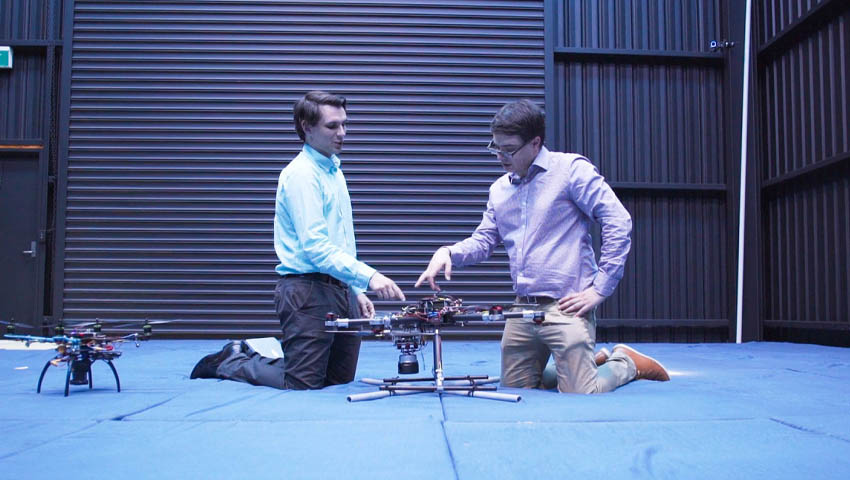DST robotics specialist Ricardo Cannizzaro has used a unique indoor flight lab to integrate and test new algorithms, hardware and sensors on small uninhabited aircraft systems (UAS) to better support military operations in contested urban environments.
To continue reading the rest of this article, please log in.
Create free account to get unlimited news articles and more!
A robot’s ability to build a map of its surroundings and calculate its own position, known as simultaneous localisation and mapping (SLAM), is a common robotics problem that research groups around the world are tackling.
The approach taken by this team, led by Dr Jennifer Palmer, is for the UAS to use a 2D scanning laser sensor, monitoring changes between scans as it moves to build a picture and thus a map, which it uses to ‘find’ itself in.
Cannizzaro explained, "If an experiment doesn’t go entirely to plan, the drone can land on the soft mats and is contained by the netting. Our motion capture system gives us position and orientation information of aircraft as they fly, allowing us to compare the outputs of various position estimation algorithms against ground truth.
"Because GPS signals are not available inside, we can also pipe that data in real time to the aircraft’s flight controller and tell it ‘this is where you are’ to close the loop on its positioning system," Cannizzaro added.
For The Technical Cooperation Program (TTCP) Contested Urban Environment (CUE) 2018 strategic challenge in Canada last year, the team deployed a 2D SLAM algorithm, tweaking it for the specific application.
The team has constructed the quadcopter from low-cost hobbyist components in a bid to see the performance that can be achieved at this price-point. A new rapid prototyping capability is proving very useful – allowing for the custom design and build of 3D components to quickly modify the quadcopter when, for example, new sensors need to be mounted.
At the recent CUE 2019 challenge in the US, several improvements in UAS autonomy were successfully demonstrated, Cannizzaro expanded on this, explaining, "We had the incredible opportunity to demonstrate our UAS capability in three urban environments in New York City: in a subway tunnel, a high-rise building, and a downtown streetscape. We learned more about our system and recorded a lot of valuable data, which was also of great interest to the international community."
Stephen Kuper
Steve has an extensive career across government, defence industry and advocacy, having previously worked for cabinet ministers at both Federal and State levels.

 Login
Login







